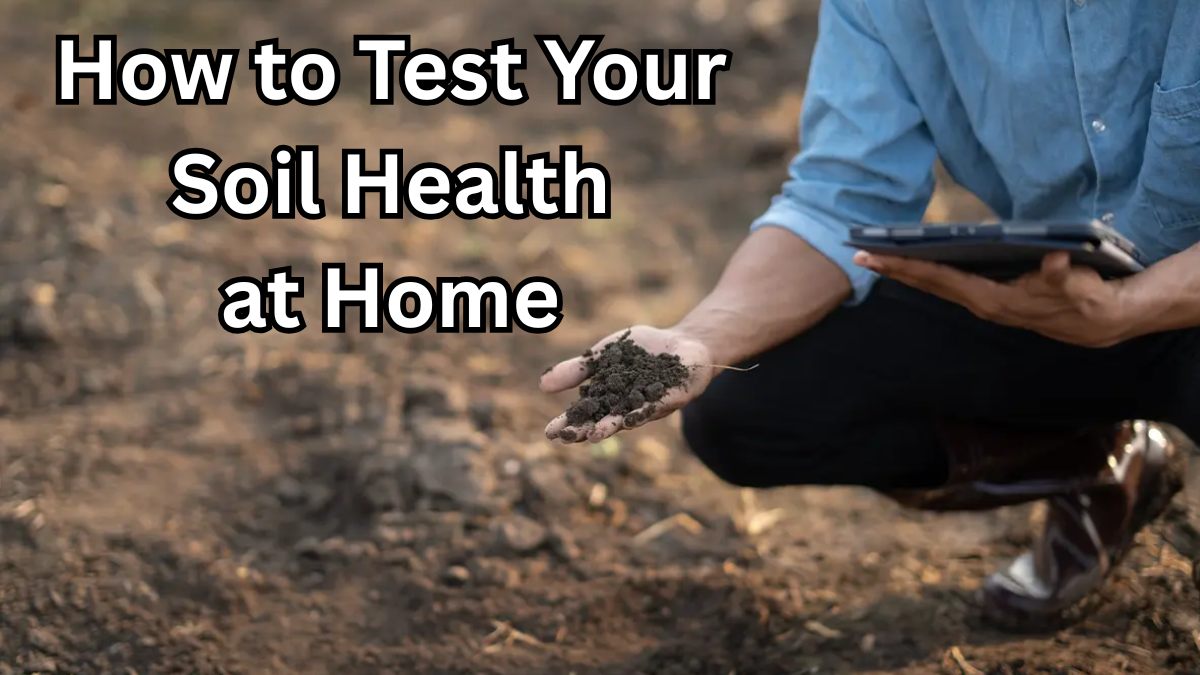Healthy soil is the foundation of a thriving garden or farm. If your plants are struggling or growth seems slow, the problem may be hidden beneath the surface—right in your soil. Fortunately, you don’t need expensive lab tests to check your soil’s health. With a few simple DIY methods, you can test soil health at home quickly and accurately.

Why Testing Soil Health Matters
Understanding your soil’s condition helps you:
-
Ensure optimal plant growth
-
Avoid over-fertilizing or under-fertilizing
-
Improve water retention and drainage
-
Identify nutrient deficiencies early
Using tools like a soil test kit, texture jar, and simple drainage tests, you can gain insights into your soil’s pH, nutrients, and overall structure.
DIY Soil Texture Test with a Jar
Your soil’s texture affects how well it retains water and nutrients. A texture jar test is an easy way to evaluate this.
Steps
-
Take a clear jar and fill it one-third with soil.
-
Add water until the jar is almost full and a pinch of dish soap.
-
Shake vigorously and let it sit for 24 hours.
Observation Table
| Layer | Soil Type | Interpretation |
|---|---|---|
| Bottom | Sand | Drains quickly, low nutrient retention |
| Middle | Silt | Holds moisture, moderate nutrients |
| Top | Clay | Retains water, slow drainage |
If sand dominates, your soil may dry out too quickly. If clay dominates, consider adding organic matter for better aeration.
Simple Drainage Test
Good drainage is essential for healthy roots.
Steps
-
Dig a hole about 12 inches deep.
-
Fill it with water and let it drain.
-
Refill the hole and measure how long it takes to drain.
Drainage Results Table
| Drainage Time | Interpretation |
|---|---|
| < 30 minutes | Fast-draining, may need more water retention |
| 30–60 minutes | Ideal drainage |
| > 60 minutes | Poor drainage, consider soil amendments |
A proper drainage test ensures your plants’ roots aren’t waterlogged, which can stunt growth.
Testing Soil pH at Home
Soil pH affects nutrient availability. Most plants thrive in slightly acidic to neutral soil (pH 6–7).
DIY Methods
-
Use a soil test kit for the most accurate reading.
-
Or mix soil with vinegar or baking soda:
-
Vinegar + soil fizz → alkaline soil
-
Baking soda + soil fizz → acidic soil
-
Adjust soil pH with lime (to raise pH) or sulfur (to lower pH) as needed.
Checking Soil Nutrients
Nutrients like nitrogen (N), phosphorus (P), and potassium (K) are essential for healthy plant growth.
Quick DIY Tips
-
Soil test kits can give you immediate readings for N-P-K levels.
-
Observe plant health for clues: yellowing leaves often indicate nitrogen deficiency, weak growth may signal low phosphorus.
Quick Recap: DIY Soil Health Tests
| Test Method | What It Checks | Tools Needed |
|---|---|---|
| Texture Jar | Soil composition (sand, silt, clay) | Clear jar, water, soap |
| Drainage Test | Water movement | Shovel, water |
| pH Test | Soil acidity/alkalinity | Soil test kit, vinegar/baking soda |
| Nutrient Test | Nitrogen, phosphorus, potassium | Soil test kit |
Tips for Accurate Home Soil Testing
-
Take samples from different spots in your garden.
-
Test soil when it’s neither too wet nor too dry.
-
Repeat tests seasonally for best results.
FAQs About Testing Soil Health at Home
Q1: How often should I test my soil?
You should test soil health at home at least once a year, preferably before planting season.
Q2: Can a DIY soil test replace lab testing?
DIY methods provide a quick overview. For precise nutrient levels, lab testing is recommended.
Q3: Do I need special tools for a soil texture test?
No. A texture jar, water, and soap are enough for an effective DIY test.
Q4: How can I improve poor soil drainage?
Adding organic matter, compost, or sand can improve drainage and soil structure.
Click here to learn more